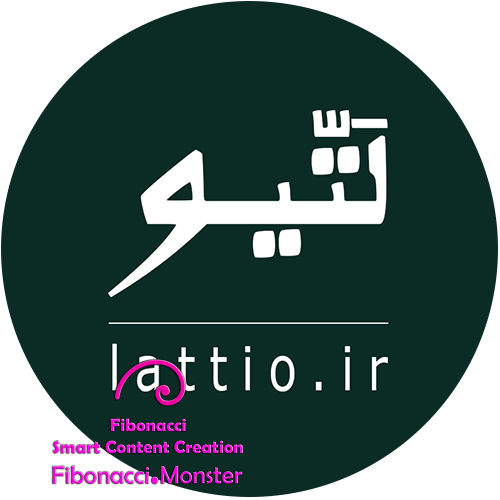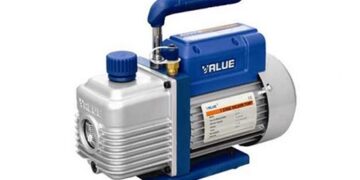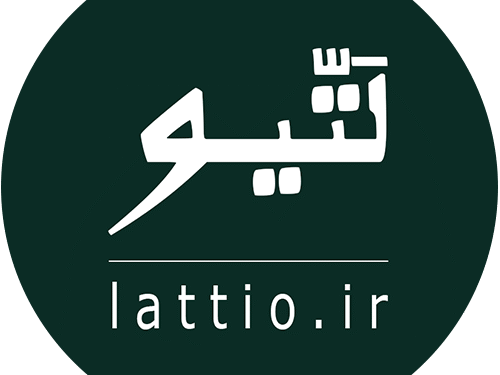In the saturated landscape of the modern coffee shop, standing out is no longer a luxury—it’s a necessity. Café owners and managers constantly juggle fierce competition, slim profit margins, and the ever-evolving tastes of discerning customers. While ambiance, branding, and customer service are crucial, the heart of a truly successful café beats in the consistent quality of its core offerings. The difference between a customer who visits once and one who becomes a loyal regular often comes down to that perfect cup.
This comprehensive guide is your roadmap. We will move beyond simple product lists and delve into the strategy behind building a resilient, profitable, and beloved café. Here at Lattio, we believe that an educated partner is a successful partner. Together, we’ll explore how to select the finest ingredients, engineer a high-margin menu, and turn your supply chain into your greatest competitive advantage.

Chapter 1: The Foundation of Your Café: A Deep Dive into Wholesale Coffee
Before a single shot is pulled, the story of your café’s quality begins at the source. Making the switch from retail to wholesale purchasing is a fundamental step in professionalizing your operations. It’s about achieving consistency, managing costs, and building a relationship with a supplier who understands your needs.
Why Wholesale Coffee is a Strategic Decision
For a café, consistency is king. Your customers return for the specific taste and experience they love. Sourcing coffee from a dedicated wholesale supplier ensures that the flavor profile of your house espresso or filter coffee remains stable batch after batch. This builds brand trust and customer loyalty in a way that inconsistent, retail-bought beans never can. Furthermore, buying in bulk significantly lowers your cost-per-cup, directly impacting your bottom line and giving you more flexibility in your pricing strategy.
Understanding the Beans: Arabica vs. Robusta for a Café Setting
The choice between Arabica and Robusta beans is one of the first decisions a café owner must make.
- Arabica: Known for its complex aromatic and flavor profiles, with notes ranging from floral and fruity to sweet and winey. It has higher acidity and lower caffeine content. Arabica beans are the backbone of the specialty coffee industry and are essential for any café wanting to attract coffee connoisseurs. They are perfect for high-quality filter coffee and premium espresso.
- Robusta: As the name suggests, Robusta is a hardier plant. Its beans have a bolder, stronger, and more “classic” coffee flavor, often with rubbery or chocolatey notes. Critically, it contains significantly more caffeine and produces a thick, stable crema—that beautiful reddish-brown foam on top of an espresso shot. Many high-end espresso blends include a small percentage of quality Robusta to enhance their crema and add a powerful depth.
A successful café often utilizes both. A 100% Arabica for a bright, nuanced filter coffee, and a carefully crafted Arabica-Robusta blend for a rich, crema-heavy espresso that cuts through milk beautifully in lattes and cappuccinos.
Blend vs. Single-Origin: Crafting Your Coffee Menu
This is where you can truly begin to define your café’s identity.
- Coffee Blends: These are mixtures of beans from different origins, expertly combined to create a specific, consistent, and balanced flavor profile. The goal of a blend is reliability. It’s your workhorse, the foundation of your espresso-based drinks, designed to taste the same every day of the year.
- Single-Origin Coffee: This refers to coffee sourced from a single geographical location—a specific farm, cooperative, or region within a country. Single-origin coffees are celebrated for their unique and distinctive flavors that reflect their specific terroir (the soil, climate, and altitude where they were grown).
While a house blend is essential for consistency, a decision to buy wholesale single-origin coffee is what can elevate your café from a simple coffee stop to a destination. Offering a rotating selection of single-origin beans for pour-over, AeroPress, or even as a featured espresso allows you to:
- Attract Coffee Aficionados: Educated customers will seek you out for unique flavor experiences.
- Host Tasting Events: “Cupping” events are a fantastic way to build community and showcase your expertise.
- Command Higher Prices: Customers are willing to pay a premium for a unique and high-quality product with a story.
The Impact of Roast Profile
The degree to which coffee is roasted dramatically affects its final taste.
- Light Roast: Retains the most of the bean’s original, intrinsic flavors. Expect bright acidity and vibrant floral or fruity notes. Ideal for showcasing the nuances of a high-quality single-origin in a filter brew.
- Medium Roast: A balanced profile where the bean’s original flavors are still present but are complemented by the deeper, sweeter notes from the roasting process itself. This is a versatile sweet spot for many espresso blends and all-purpose coffees.
- Dark Roast: The roasting process dominates the flavor profile, resulting in bold, smoky, and chocolatey notes with very low acidity. Popular for traditional espresso blends that need to be potent and cut through large amounts of milk.
Your menu should ideally feature options from across this spectrum to cater to a wide range of customer preferences. When sourcing, always ask your supplier for the roast date. The freshest coffee is always the best, and beans should ideally be used within a few weeks of roasting.
Chapter 2: Beyond Espresso: The Power of Powders in Your Menu
While coffee is your foundation, a diverse and exciting menu is what maximizes your revenue per customer. High-quality beverage powders are not an afterthought; they are a crucial tool for attracting a broader audience, increasing average ticket size, and boosting your profitability.
Hot Chocolate: The Underestimated Classic
Every café serves hot chocolate, but few do it exceptionally well. This is an easy area to stand out. Moving away from generic, sugar-heavy syrups or powders to a premium product can transform your hot chocolate from a kids’ menu item to a gourmet treat for all ages. When considering sourcing the best hot chocolate powder for your café , look for:
- High Cacao Content: A higher percentage of real cocoa results in a richer, more complex, and less cloyingly sweet flavor.
- Quality of Ingredients: Are the ingredients simple and recognizable? Avoid powders with excessive fillers, artificial flavorings, or anti-caking agents.
- Solubility: The powder should dissolve easily into hot milk, creating a smooth, velvety texture without any graininess.
A premium hot chocolate serves as a perfect base for high-margin signature drinks, like a Peppermint Mocha during the holidays or a Spicy Chili Hot Chocolate for a more adventurous palate.
White Chocolate: A Luxurious and Versatile Option
White chocolate offers a creamy, sweet, and decadent flavor profile that pairs wonderfully with a variety of other ingredients. It’s a fantastic way to add creativity to your menu. When investing in high-quality wholesale white chocolate , ensure it is made with real cocoa butter for a rich flavor and smooth texture, not just sugar and vegetable oil.
Use it to create:
- White Chocolate Mochas: A crowd-pleasing alternative to the traditional mocha.
- Raspberry White Chocolate Lattes: A visually appealing and delicious specialty drink.
- Iced White Chocolate Matcha: A trendy and profitable fusion beverage.
Trendy & Profitable: Chai Masala & Karak Chai
The demand for spiced, tea-based lattes has exploded in recent years. They offer a comforting, aromatic, and often caffeine-free or lower-caffeine alternative to coffee.
- Chai Masala: This traditional Indian spiced tea is a symphony of flavors, typically including cinnamon, cardamom, ginger, cloves, and black pepper. Offering an authentic and well-balanced option is key. An aromatic and sugar-free spicy chai masala gives you full control over the sweetness level for each customer and serves as an excellent, healthy-alternative selling point.
- Karak Chai: Hailing from the Middle East, Karak Chai is bolder and milkier than a typical chai latte. The tea is often brewed for longer, resulting in a strong, rich flavor that is then balanced with creamy, evaporated or condensed milk. A high-quality, rich and creamy karak chai powder allows your baristas to create this satisfying and authentic beverage quickly and consistently, opening up your menu to a new world of flavor that many competitors overlook.
These powders not only diversify your menu but also come with very healthy profit margins, making them an essential part of any modern café’s inventory.
Chapter 3: The Art of Sourcing: Choosing Your Most Important Business Partner
Your relationship with your wholesale supplier is one of the most critical partnerships you will have. A great supplier is more than just a vendor; they are a partner in your success, providing the quality products and reliable service that form the bedrock of your operations.
The Ultimate Supplier Selection Checklist
When evaluating potential suppliers, use this checklist to ensure you’re making a well-rounded decision:
- Uncompromising Product Quality: Do they offer samples? Is the quality consistent from one order to the next? Do they provide detailed information about their products, including origin, roast profiles, and ingredients?
- Exceptional Customer Service: Is their team knowledgeable, approachable, and responsive? Can they offer advice on menu development or brewing techniques? A true partner, like Lattio, offers more than just products; they offer expertise.
- Reliable Logistics: Is their ordering process straightforward? Do they have a track record of on-time deliveries? Unreliable shipping can lead to stock shortages, lost sales, and customer disappointment.
- Scalability and Consistency: Can the supplier grow with you? As your café expands, you need a partner who can consistently meet your increasing demand without sacrificing quality.
- Transparency: Are they open about their sourcing practices, roasting processes, and pricing? A transparent supplier builds a relationship based on trust.
When you’re ready to buy wholesale coffee from a trusted supplier , remember that you are not just buying a commodity; you are investing in the very essence of your customer’s experience. Choose a partner who values your business and is committed to helping you thrive.
Chapter 4: Menu Engineering and Profitability
Sourcing great products is half the battle. The other half is presenting them in a way that maximizes both customer satisfaction and your profitability. This is the science of menu engineering.
Calculate Your Cost-Per-Cup
For every single item on your menu, you must know your exact Cost of Goods Sold (COGS). This involves calculating the cost of the coffee, milk, syrup, cup, and lid for each specific drink. Only by knowing this can you set prices that ensure a healthy profit margin (typically, the beverage cost should be no more than 20-25% of the menu price).
Develop Signature Beverages
Use your high-quality powders and syrups to create unique “Signature Drinks” that are only available at your café. These are high-margin items that create buzz and give customers a reason to choose you over the competition.
- Example 1: The “Golden Latte” using a base of rich and creamy karak chai powder, a shot of espresso, and a touch of honey.
- Example 2: An “Alpine Mocha” using high-quality wholesale white chocolate and a hint of peppermint syrup.
Train Your Team to Upsell
Your baristas are your front-line sales team. Train them on the flavor profiles of all your offerings. Empower them to make recommendations. A simple suggestion like, “Would you like to try our new single-origin from Ethiopia? It has incredible blueberry notes,” can increase sales of premium items. Similarly, when a customer orders a chai latte, they can be offered the authentic, balanced experience of an aromatic and sugar-free spicy chai masala. When they ask for hot chocolate, the barista can proudly recommend the deep, complex flavors of the best hot chocolate powder for your café.
Conclusion
By focusing on a strategic approach to sourcing—understanding your beans, diversifying your menu with high-quality powders, and choosing a supplier who acts as a true partner—you lay the foundation for long-term growth and profitability. You create a business that is resilient, reputable, and renowned for its quality.
Ready to partner with a supplier dedicated to quality and your success? Explore the Lattio wholesale catalog today and request your product samples to taste the difference for yourself.






















